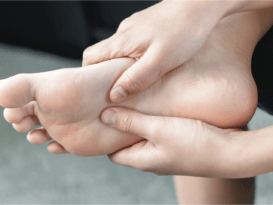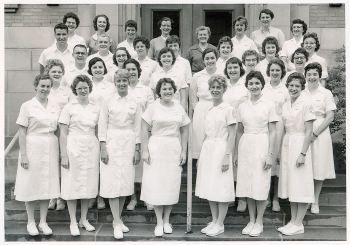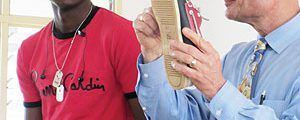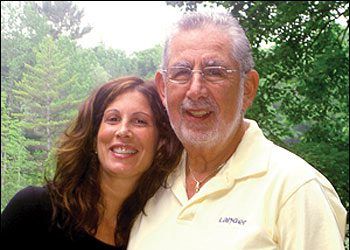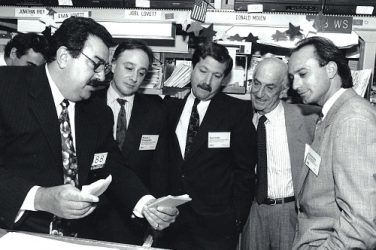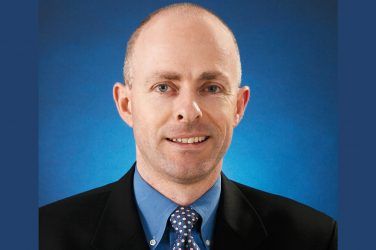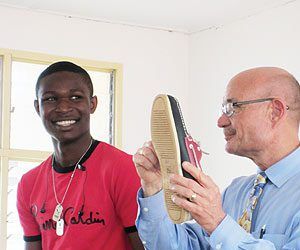Dedicated to O&P Education
For 30 years—from 1961 through 1991—Joan Edelstein, MA, PT, FISPO, CPed, was a senior research scientist in the Department of Prosthetics and Orthotics at New York University (NYU), New York, where she pioneered the establishment of the first undergraduate curriculum leading to a baccalaureate degree in O&P and taught many practitioners. From there she went on to teach physical therapy at Columbia University, New York, New York. She is the author of notable O&P textbooks and numerous research papers, and is a well-known lecturer both in the United States and internationally. These accomplishments and her dedication to education within the rehabilitation arena have made Edelstein an inspiration for many in the O&P profession.
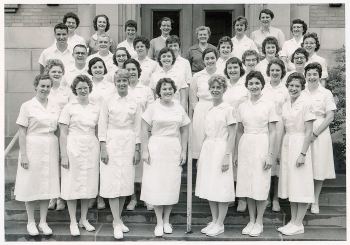
Edelstein at the University of Wisconsin, top row second from left. Photographs courtesy of Joan Edelstein.
Early Years
Edelstein was born in East Orange, New Jersey, and grew up a few miles away in the township of Hillside, Union County. Her father owned a business, General Adding Machine, which sold and serviced hand-cranked mechanical calculators, typewriters, and check-writing machines. As a young woman Edelstein worked in the family business and half jokingly ascribes her love of biomechanics “to the understanding of gears, cogs, and cams within a number cruncher.”
According to Edelstein, in those days “the usual career expectations for young women were to become a secretary, a nurse, or a teacher.” However, her uncle took an interest in her career development. Although he trained as an urologist, he developed a firm belief in the value of rehabilitation, especially in otherwise healthy trauma patients, from his service in the Army Medical Corps during World War II. At that time, Howard Rusk, MD, a pioneer in rehabilitation medicine, was writing a health column in The New York Times, so Edelstein and her uncle decided they would pay him a visit to learn more. They also called on Henry Kessler, MD, PhD, another well-known proponent of physical rehabilitation and founder of the Kessler Institute for Rehabilitation, West Orange, New Jersey. It was from these visits that Edelstein says she learned an early life lesson: “If you really want to meet someone or get something done, take the full initiative—make the cold call, tackle the work, don’t sit back.”
Edelstein says these meetings were inspirational. She says they opened her eyes to see that there were more career possibilities for a young woman than the options typically portrayed. With the full support of her uncle, and an all-important scholarship that made it possible, she attended NYU to become a physical therapist. During that time, Edelstein also worked part time as a typist to pay for books and commuting expenses. In the 1950s, physical therapy (PT) was still an emerging field, and she often had to explain that she was “not training to become a masseuse or physical education teacher.”
PT and O&P Converge
After graduating from NYU, Edelstein entered clinical practice at NYU Medical Center, now known as the NYU Lagone Medical Center (NYULMC), in the Institute of Physical Medicine and Rehabilitation. Her first patient was Dougie, an angry eight-year-old boy with a transfemoral amputation who threw his prosthesis at her, she recalls. In addition to the memorable experience of having a leg thrown at her, the meeting was significant to Edelstein’s career because she says that interaction helped her recognize that the roles of providing prosthetic devices and rehabilitation go hand-in-hand. A prosthesis is not just a device, and rehabilitation is not simply a technique. “True rehabilitation is fundamentally teaching,” she says. “The therapist guides and teaches the patient to walk, to sit, to climb, and so on. The minute you provide a prosthesis you change a person’s life, and that has great appeal for me, even to this day.” Dougie eventually accepted his prosthesis, and they did become friends.
While at NYULMC, Edelstein also treated post-stroke patients in their homes. She says direct patient interaction is very important; “otherwise you are running on empty.”

Edelstein preparing for a lecture in the 1980s.
After three-and-a-half years at NYU, Edelstein was invited to join the faculty of the University of Wisconsin, Madison, which allowed her to gain more teaching experience. However, she wanted to return to the East Coast, and in 1961, she accepted a position in NYU’s Prosthetics and Orthotics Program, which was then under the aegis of the College of Engineering and funded by grants from the U.S. Department of Veterans Affairs and other governmental agencies. This is where she spent the next 30 years of her career.
Up until 1960, the program focused mainly on lower-limb prosthetics, but the director, Sidney Fishman, PhD, had reportedly always wanted to have a PT on staff. Edelstein developed an orthotics program, including the description and understanding of orthotic devices, fabrication techniques, and training modules. She says she loved the combination of the science, field-testing, and teaching aspects of her job. Over time, the NYU O&P program was more fully developed; courses on upper-limb prosthetics and orthotics followed, and eventually a program in spinal bracing was added. In a learning experience Edelstein remembers well, she and other members of the faculty were measured by an orthotist and fitted for thoracolumbar sacral orthoses (TLSOs), and she says they discovered through direct experience just how awkward and restricting the orthoses can be.
Throughout her career, Edelstein completed research and wrote papers for publication, including some of the first work on hydraulic prostheses, and contributed to many academic texts. Edelstein also began to lecture farther afield in the 1970s. Thus began the travel phase of her career and involvement in the International Society for Prosthetics and Orthotics (ISPO), where she served on the board in several leadership positions. Edelstein says she instantly recognized the value of this organization “as it was an interdisciplinary approach, inviting various specialties to join in a team.” She has travelled to all 50 states within the United States and has lectured internationally in Europe, Africa, Asia, and Australia.
Edelstein notes that extensive travel also expanded her perspective on patient settings. “Many things that we take for granted are not at all universal,” she says. “A good practitioner will understand the patient’s environment and adapt devices and therapy to best suit the local surroundings. Even within the United States you cannot presume to know the conditions in which a patient lives, or how the person will use a device.”
In 1991, the NYU Department of Prosthetics and Orthotics was closed as the essential grants needed to sustain it were not renewed. With characteristic drive, Edelstein looked for new opportunities. She had been teaching as an adjunct at Long Island University, Brooklyn campus, New York, and became aware of an opening at Columbia University. Shortly after joining the Columbia faculty, she was appointed director of the physical therapy program. She says that this position was an ideal fit as it combined three academic areas about which she is passionate: teaching students, writing papers, and program administration. She served there for ten years until her “retirement” in 2001. The term “retirement” is used loosely because Edelstein has continued to author O&P texts and lecture. She currently teaches the Prescription, Application, and Fabrication of Assistive, Adaptive, Orthotic, Protective, Supportive, and Prosthetic Devices and Equipment course in the NYU Steinhardt School of Culture, Education, and Human Development DPT program.
Throughout her career, Edelstein’s love of people led her to a broad network of friends and professional connections. She says that she recognizes the lasting impression her patients and students have had on her and values the opportunities she has had to meet and collaborate with leading figures in the rehabilitation field.
Change
 Edelstein
Edelstein
In a career that has extended more than five decades, Edelstein has witnessed major changes and the evolution of many new technologies including the expansion of foot designs, the introduction of fluid-controlled knees, the use of carbon fiber and thermoplastics, the wider choice of suspension systems, the complete rethinking of socket construction, and myoelectric prosthetic devices. Even today, she says she stays abreast of the current literature and sees a lot of potential for the future in areas such as implantation and device durability. As part of this continuous enhancement, Edelstein recognizes that research is essential, and she insists that scientific evidence be made clear and available: “Research is expensive and laborious, but it needs to be done if the profession is to thrive.” She says she thinks that the profession is making progress in this area, and she applauds the ongoing professionalization and higher educational standards.
Final Lessons
When asked what advice she would give to those entering the O&P profession, Edelstein does not hesitate to say, “Nothing takes the place of patient experience.” This very much relates to her core belief: “You are teaching people how to have a better quality of life.” She says she now relishes combining professional and personal responsibilities. In addition to guest lecturing at several universities, she finds time to enjoy her four lively grandchildren, guide tours at several New York City museums, and perform in chamber music ensembles. Her final comment is a wish for practitioners and students to maintain a broad perspective—beyond devices, technology, and practice management. “Being more sophisticated, culturally aware, and well-read in subjects such as literature, politics, and history enhances a person and allows relationships to open and new ideas to flow.”
Séamus Kennedy, BEng (Mech), CPed, is president and co-owner of Hersco Ortho Labs, New York. He can be contacted via e-mail at seamus@hersco.com or by visiting www.hersco.com.









